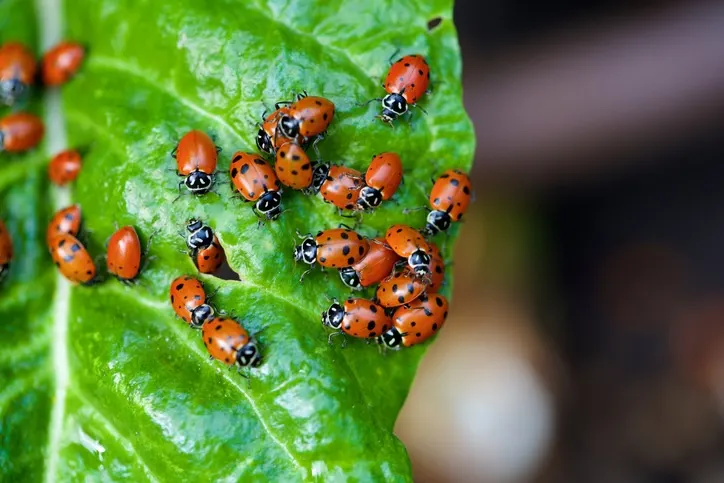
Gardener’s Best Friends: The Amazing World of Ladybugs Not only are they undeniably cute, but ladybugs are also hailed as the number one beneficial insect in the garden. These charming little creatures play a crucial role in the biological control of aphids and other pesky garden pests, making them a cherished sight for any green-thumb enthusiast.
Their mere presence serves as a proud indicator of an organic and eco-friendly garden. By welcoming these delightful ladybirds into your garden, you bid farewell to chemical pesticides, fostering a natural and balanced ecosystem.
Often known as ladybirds, these tiny beetles boast a striking orange-red color adorned with those iconic tiny black spots. Some sport no spots at all, while others flaunt solid black or black with red spots, each species with its unique charm.
Though their name is a bit misleading, as they are indeed beetles and not true bugs, ladybugs showcase their power through their chewing mouthparts. As they rest, their delicate wings elegantly tuck beneath the hard flaps called elytra.
Discover the wonders of these garden protectors and embrace their presence in your garden for a harmonious and thriving landscape.
How Ladybugs Help The Garden

Except for a few herbivorous species that are known to cause damage to crops such as maize, spinach, and soybeans, ladybugs are generally harmless, feeding on small insects that infest the garden plants.
Aphids are their favorite meal, and that is what makes them beneficial to gardeners. These soft-bodied bugs suck the plant juices, especially from the tenderest parts of the plant such as the growing tips and developing buds, stunting growth and affecting fruit set.
Ladybugs are voracious feeders, gobbling up 40-50 aphids a day. A single adult bug probably eats about 5,000 insects and insect larvae in its lifetime. Each female produces around 1,000 eggs a season, which it lays close to food sources in batches of 10’s, 50’s, or even 100’s at a time.
That should give you a fair idea about their pest control potential, not to mention what their offspring can do.
The larvae that hatch from the eggs do not resemble the adults and are often mistaken for harmful insect larvae and killed off by gardeners. They have an alligator-like appearance with an appetite to match.

They feed on 400-500 aphids during the 2-3 weeks they before pupating and coming out as young beetles in another week or two.
Aphids are not the only prey of ladybugs and their larvae. The make short work of mealybugs, spider mites, and the eggs and larvae of a number of larger insect pests such as Colorado potato beetle.
The entire lifecycle of a ladybug is completed in about 5 weeks or less, giving them ample time to give birth to 5-6 generations from spring to early summer. Depending on their species, they aestivate in summer and hibernate through winter, often coming together in large numbers.
How To Attract Ladybugs To Your Garden

The pest control potential of ladybugs makes them an asset in any garden. They are found almost all over the country in small and large numbers; however, they come and stay in your garden only if the conditions are right.
The following measures may help attract them into your garden and entice them to make it their home.